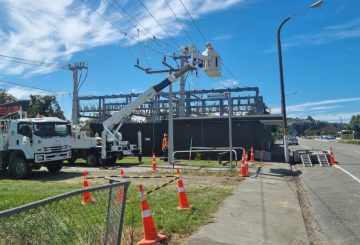오늘은 뉴질랜드에서 사상 첫 MMP 선거가 열린 지 25주년이 되는 날인데, 이는 백 여년 전 여성 투표권이 주어진 이후 뉴질랜드 선거 제도에 가장 큰 변화이다.
1996년 Wal of Footrot Flats로 이름높은 이것은 바로 뉴질랜드 사람들이 처음으로 실현한 일이다. 투표용지에 두 번 체크 표시를 하게 한 것.
만화 제작자 Murray Ball은 선거위원회가 새로운 정당인 혼합 비례대표제를 설명하는 데에 도움을 주었다.
이러한 변화는 수년간의 선거 공약이 지켜지지 않은 가운데, First Past the Post system이 군소 정당들을 폐쇄시켰다는 유권자들의 오랜 좌절감 끝에 이루어졌다.
예를 들어, Social Credit 정당은 1981년 투표의 20% 이상을 차지했지만 단 두 명만 선출됐다.
1996년에 실시한 이 새로운 제도는 모든 투표가 실시된 후 확실한 승자가 없다는 것을 의미했다.
따라서 킹메이커가 필요해진 것이다.
전 노동당 MP이자 정치사학자 Michael Bassett은 이렇게 회상한다.
“Winston [Peters]은 9주 동안 전국민으로 하여금 추측하게만 했고, 낚시하러 가면서 언론에 웃는 낯으로 조롱했으며, 마지막에 가서야 National 정당과 연합할 것이라고 발표했다.”
MMP의 이야기는 이에 가장 정통한 Winston Peters와 얽혀 있다.
그는 국가를 더 강하게 만드는 당사자 간 협력을 강조한다고 말했다.
Peters는 언론과 주요 당사자들에게 실제로 MMP를 얻지 못했다고 말했다.
“2017년 선거권 인양에서 우리는 National 정당 및 Labour 정당 모두와 협상을 시작하고 있었지만, 3일 동안이나 국가를 일질로 잡고 있다고 비난을 받고 있었으며 최종 투표는 보고조차 되지 않았다.
독일은 2017년 선거를 치뤘지만 정부를 구성하는 데 거의 5개월이 걸렸습니다. 그러나 우리는 최종 투표가 시작 이후 11일이 걸렸다.”
Peters는 MMP가 집단 다수를 차지할 수 있는 정당만이 정부를 구성할 수 있도록 보장한다고 주장한다.
MMP에 대한 비판은 항상 배보다 배꼽이 더 크다는 것이다.
하지만, Bassett은 Peters가 MMP가 들어오기 전부터 정치적 세력이었다고 말했다.
그는 MMP 제도가 녹색당의 Jeanette Fitzsimons와 Rod Donald – 친 MMP 운동원으로서 MMP를 이양해오는데 중요한 역할을 했던 – 포함한 일부 세력이 강한 정치인들에게 길을 열어 주었다고 말했다.
연합당 의원 Liz Gordon을 마지막으로 1996년 의회에 입성했다.
그녀와 Jim Anderton은 노동당을 떠나 경제적 우파 쪽으로 가면서 연합당의 창당을 도왔다.
그녀는 주요 정당들은 MMP를 좋아한 적이 없다고 말했다.
“”매우 어려운 시기였다. 두 거대 정당은 자신들의 권위를 포기할 의사가 없었다. 사실 그것은 인내해야 하는 교훈 중 하나이며, 소수 정당들은 파트너로서 성가신 존재로 여겨진다.”
Gordon은 MMP가 유급 육아휴직, 키위뱅크, 피터 골드 카드와 같은 정책을 도입하는 데 도움을 주었다고 말했다. 이어 국가가 공격적인 규제 철폐로부터 벗어나 대표성과 유권자들의 선택을 향상시키는데 도움을 주었다고 말했다.
이후 의회는 더욱 다양해졌다. 2020년 선거에서 선출된 의원들 중 50%, 58명이 여성이었다. 의원 120명 중 25명은 마오리족, 11명은 태평양섬, 8명은 아시아인이다.
MMP는 앞으로도 지속될 것으로 보인다. 2011년 국민투표에서 과반수의 지지를 얻었고 최근 시작된 선거법 전면 재검토에서는 대대적인 변화가 논의되지 않고 있기 때문이다.
출처: RNZ 뉴스





























































